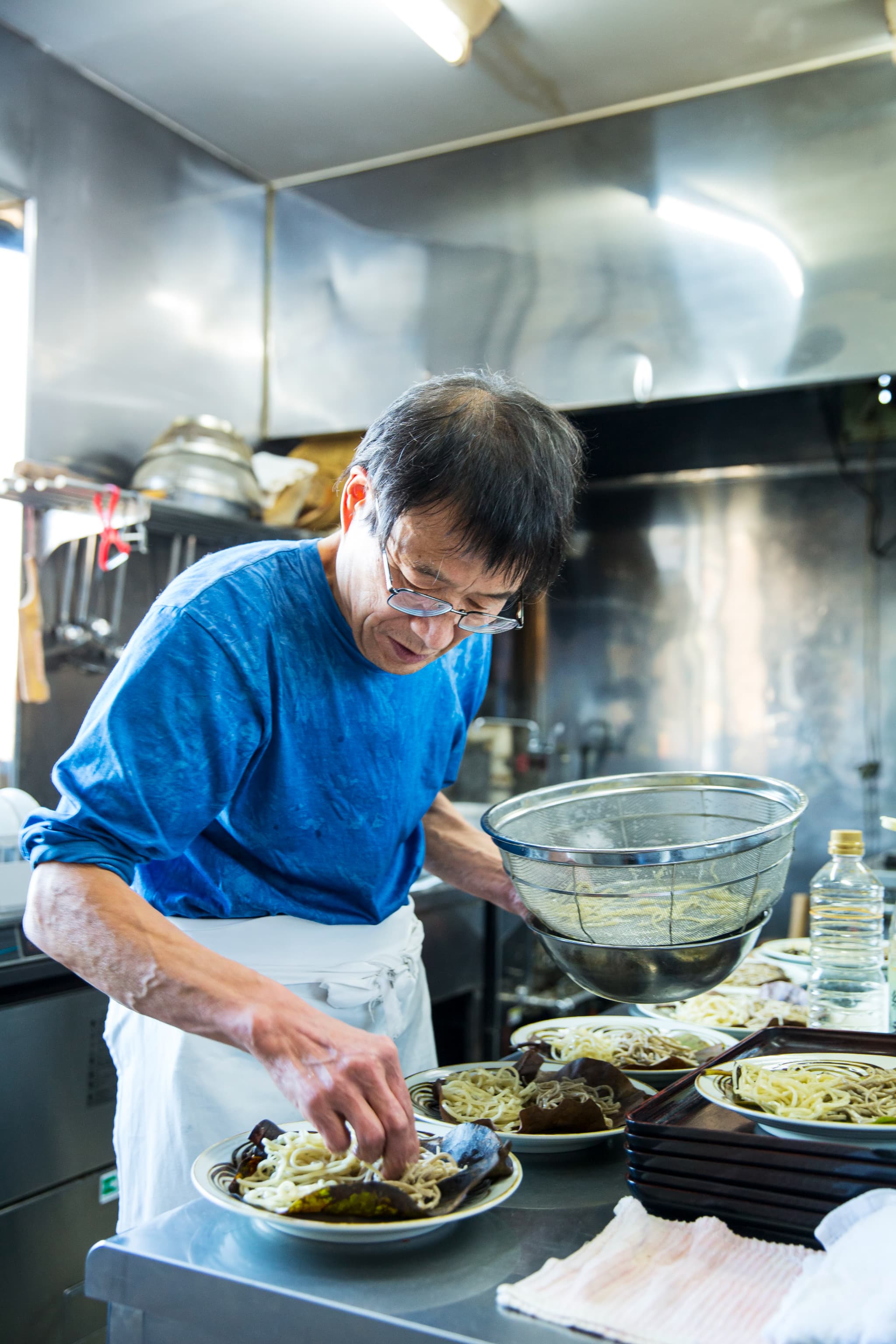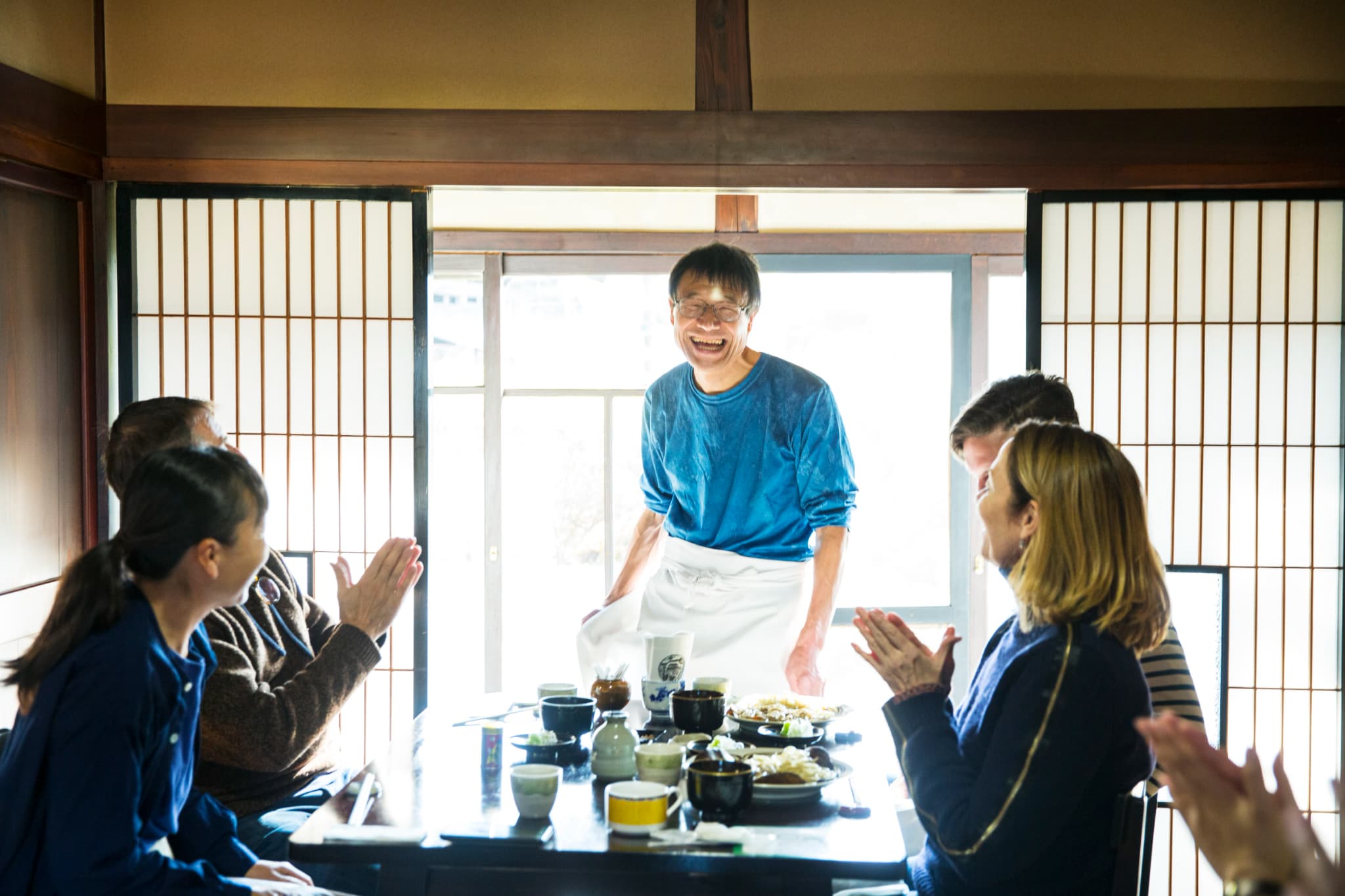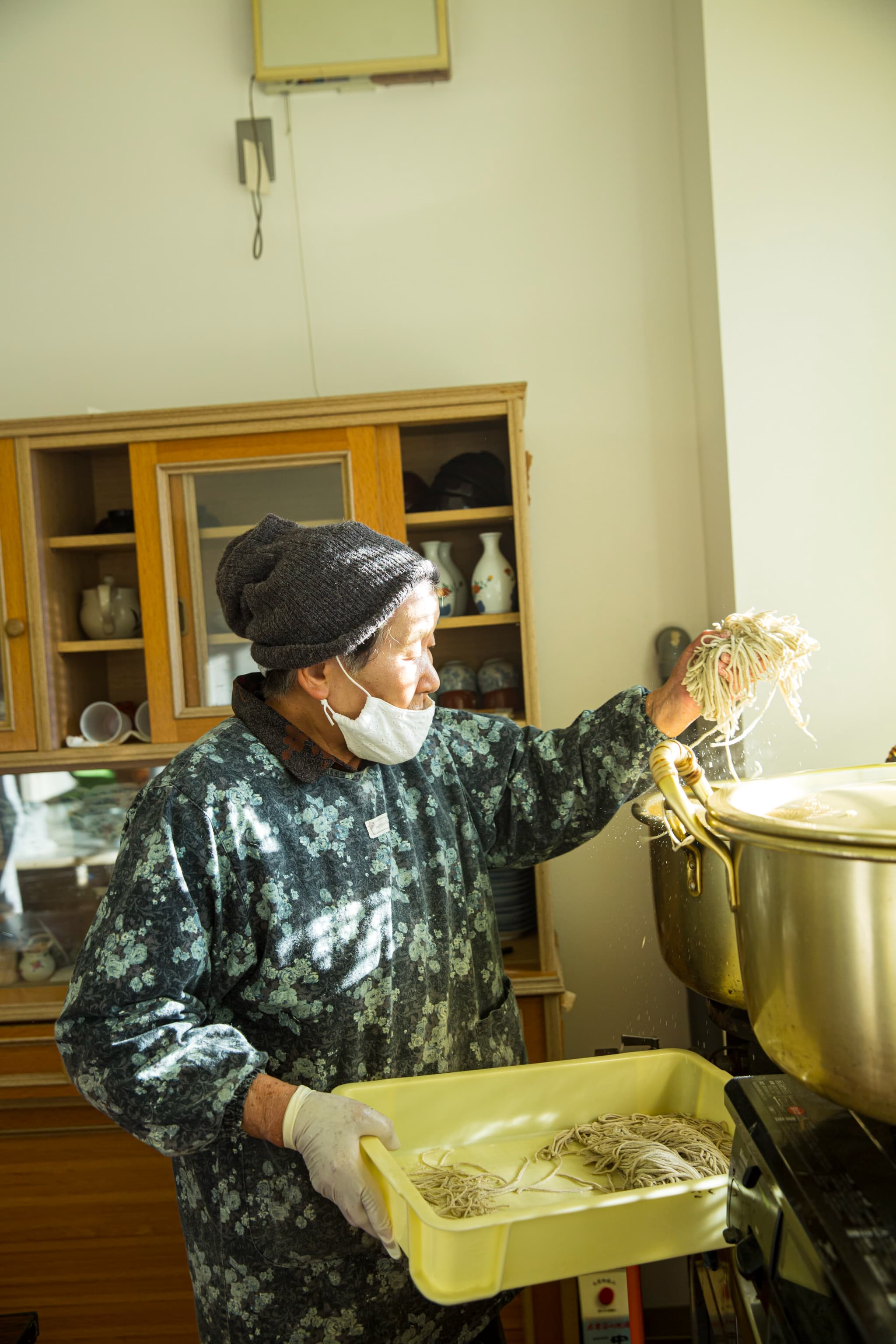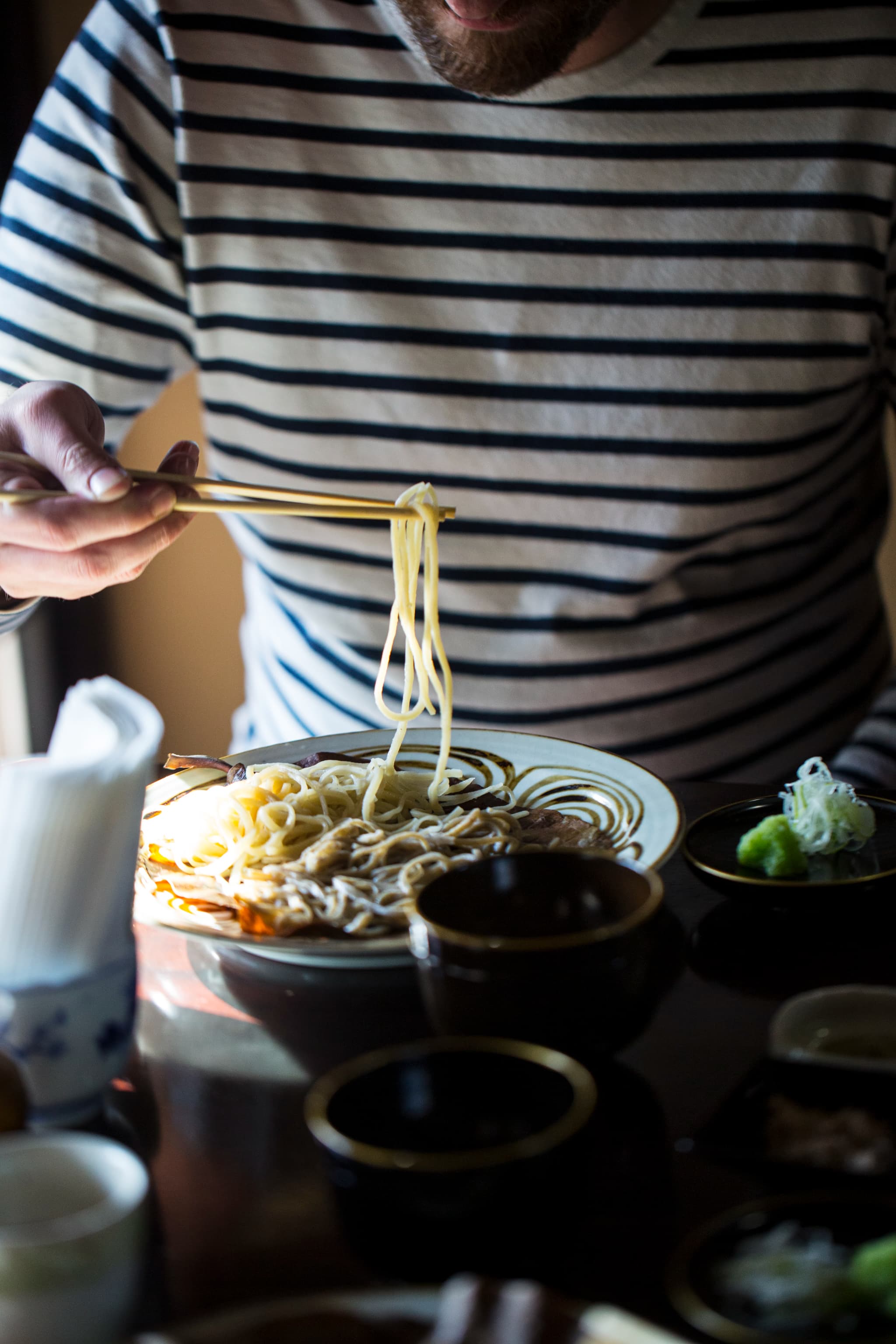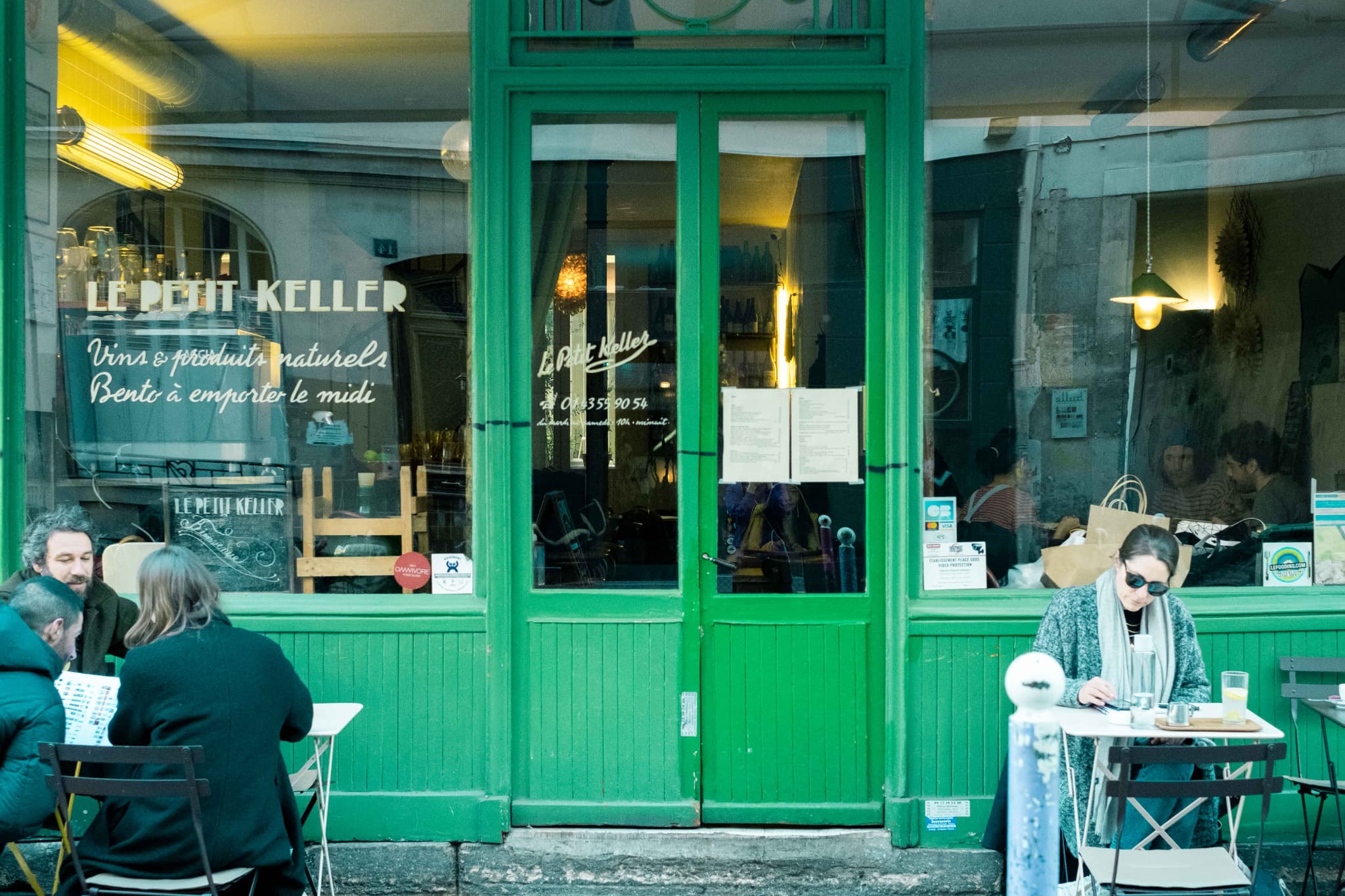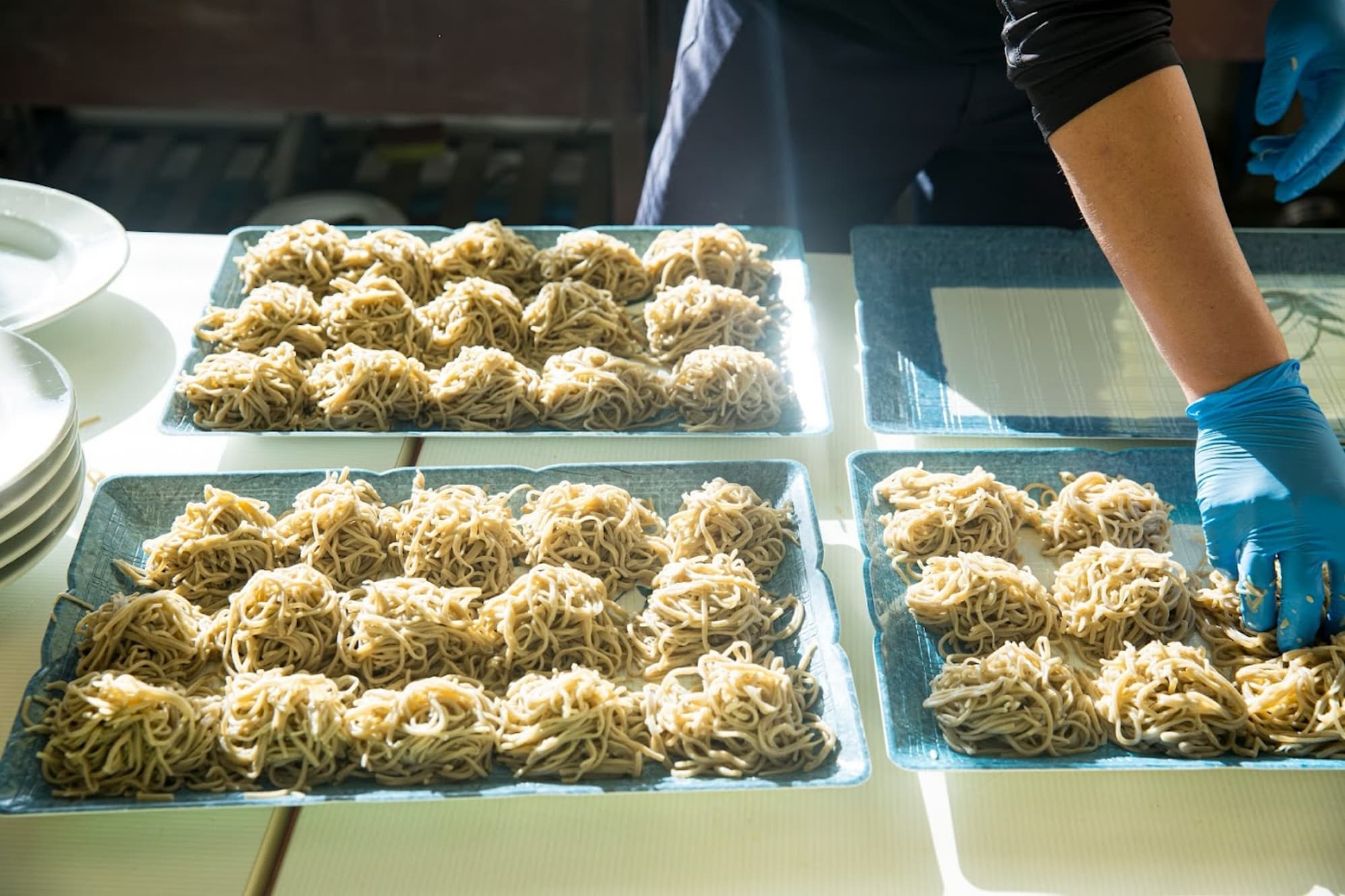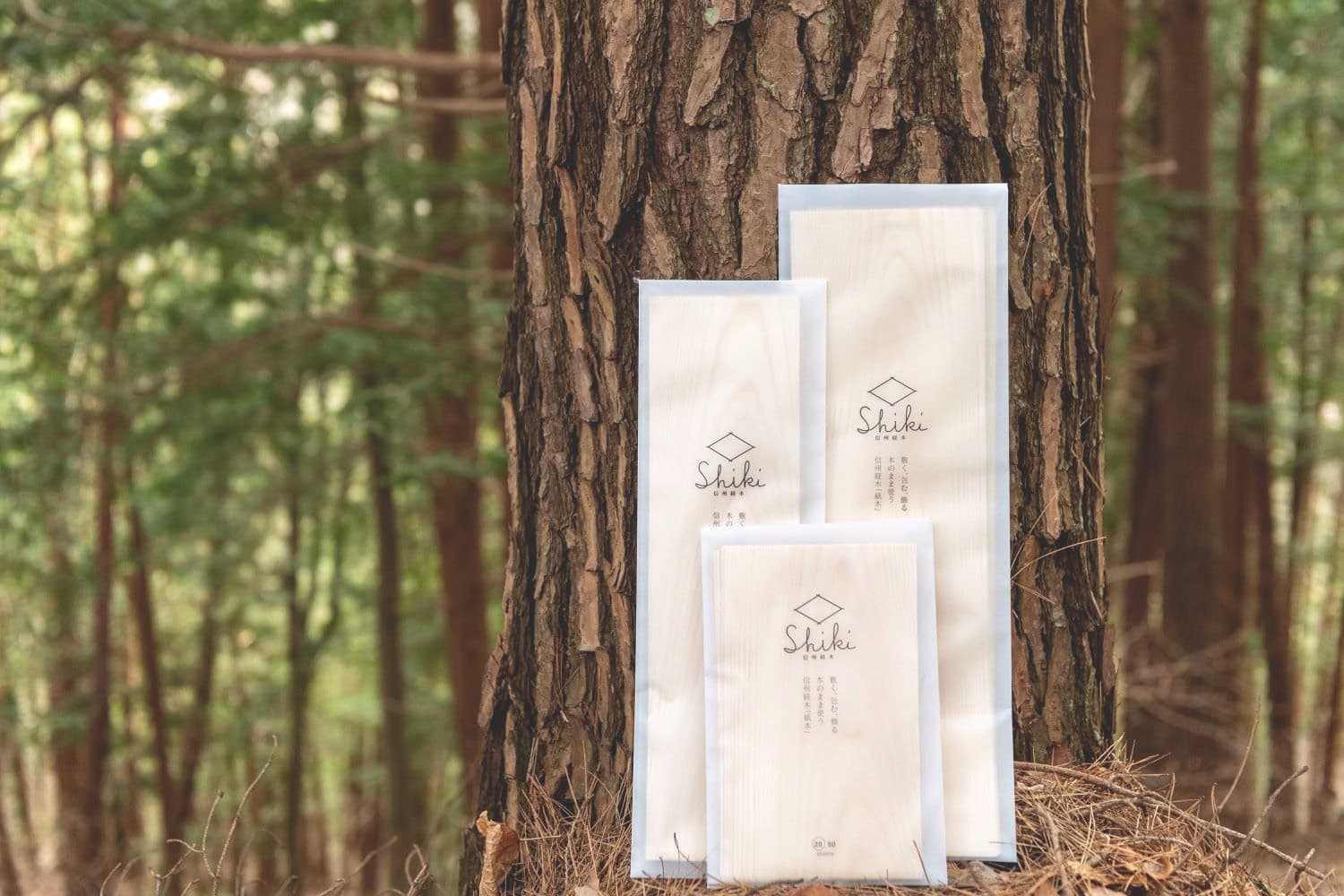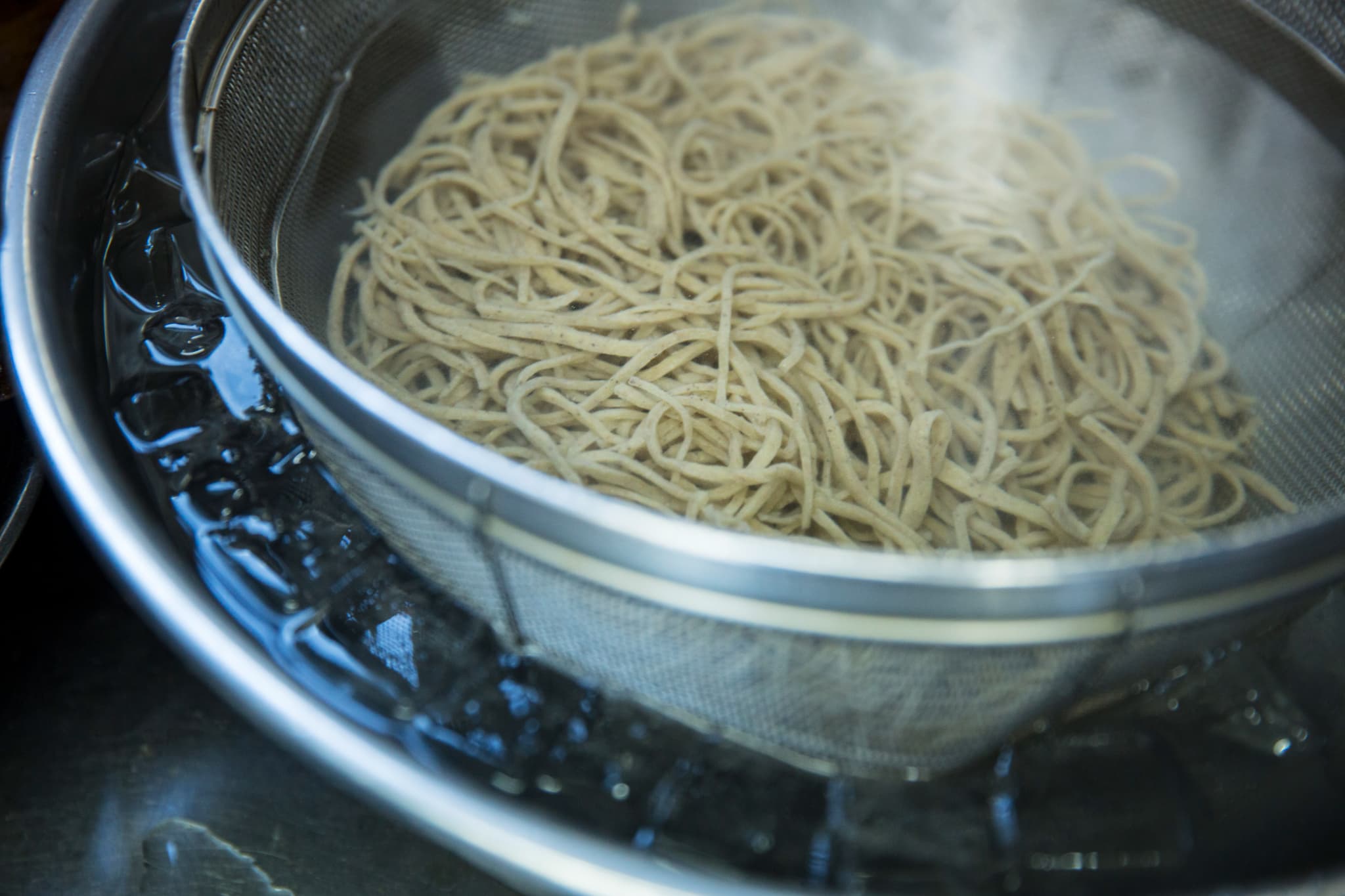
The beautiful water and ingenuity of Nagano – SOBA
水の名所に美味い「そば」あり
Nagano Prefecture is one of the leading soba producers in Japan. Soba are long, thin and smooth noodles that you slurp while eating, but in the old days, Japanese people used to eat soba in different forms such as ‘Soba-gaki’. Soba-gaki looks like rice cakes and were made by crushing buckwheat seeds and kneading the powder with boiling water. In Nagano Prefecture, with 3000 meter-class mountains and an average altitude of 1,000 meters, some areas have short daylight hours and are not suitable for rice and wheat cultivation. On the other hand, the cool climate and well-drained soil are the suitable conditions for making delicious soba. Soba has been an important staple food for living in such harsh natural environments.
In the Edo period (17th century), the number of migrants looking for jobs in Edo(modern day Tokyo) increased, and the food industry flourished. The three major fast foods at that time were sushi, tempura, and soba. From this period, a style called ‘soba-kiri’, in which the noodles were made and eaten in the same way as in modern times, first surfaced. Soba has undergone a major transformation from food eaten for survival to ‘stylish’ food loved by the townspeople of Edo. It is said that ‘Soba-kiri’ was born in the Kiso area of ​​Nagano prefecture, and spread nationwide by travelers who stopped by the post-town and also by daimyo(Japanese feudal lords).
Changes in the concept of ‘Soba’
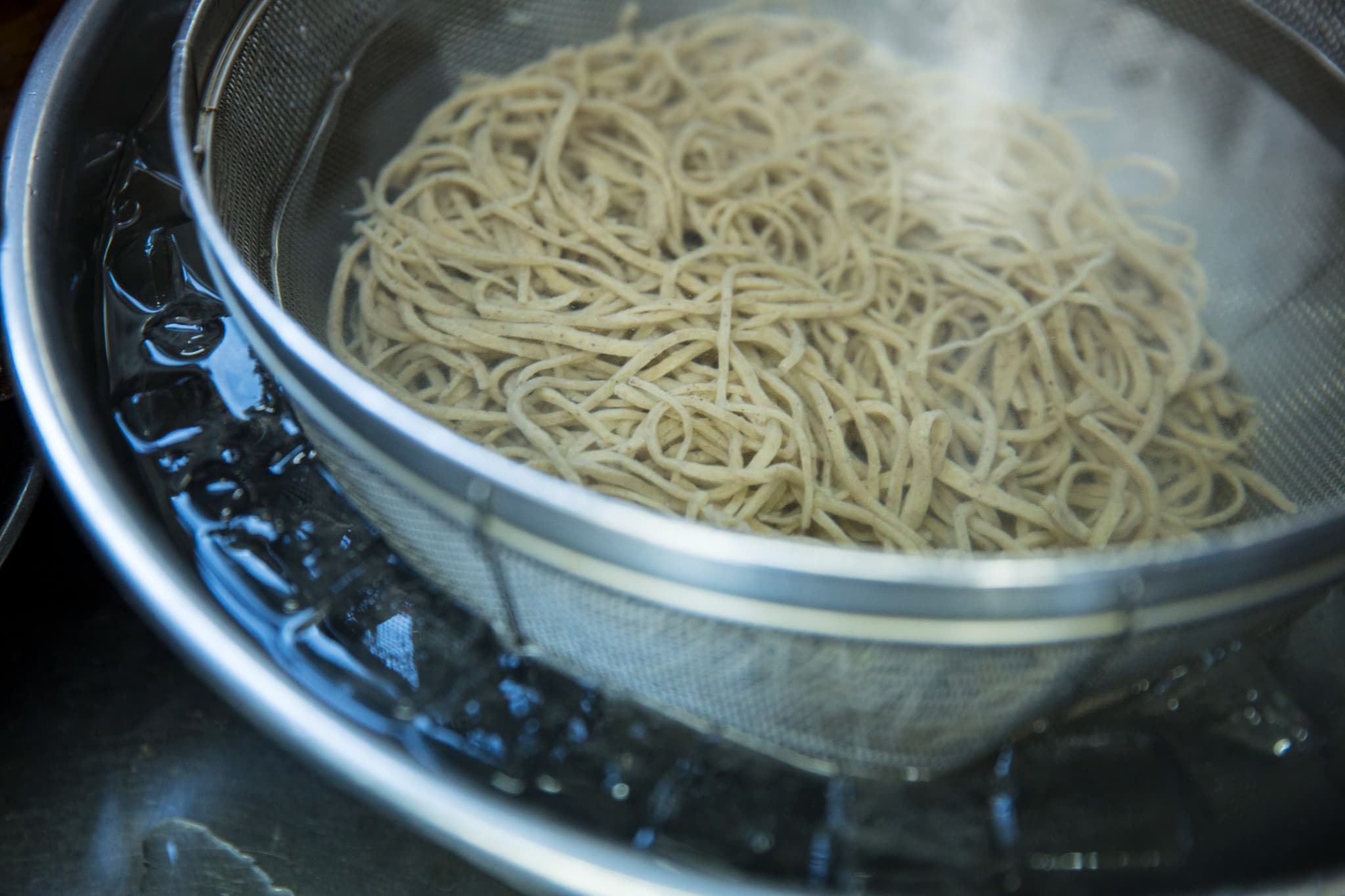
Currently, the production of buckwheat flour in Nagano Prefecture is second only to Hokkaido in Japan. Even so, the connection between soba and Shinshu(traditional name for Nagano prefecture) is deeply rooted for Japanese people; most associate soba with Shinshu. The mainstream way to eat soba, ‘soba-kiri’, is to knead the dough made by combining buckwheat flour and water, stretch it, cut it, boil it, and then tighten it firmly with plenty of cold water. Soft water devoid of minerals is preferable for the process. On that point, it is said that Nagano Prefecture, where snow falls and melts on steep mountains, providing abundant spring water, is ideal not only for soba cultivation but also as a place for soba to solidify its position in Japanese food culture. The location of Shinshu, which is surrounded by magnificent nature makes you feel close to the region it is produced. The context further emphasizes the taste of soba eaten in Shinshu and gives the image of ‘soba = Shinshu’.
Modern Soba culture arose from ingenuity
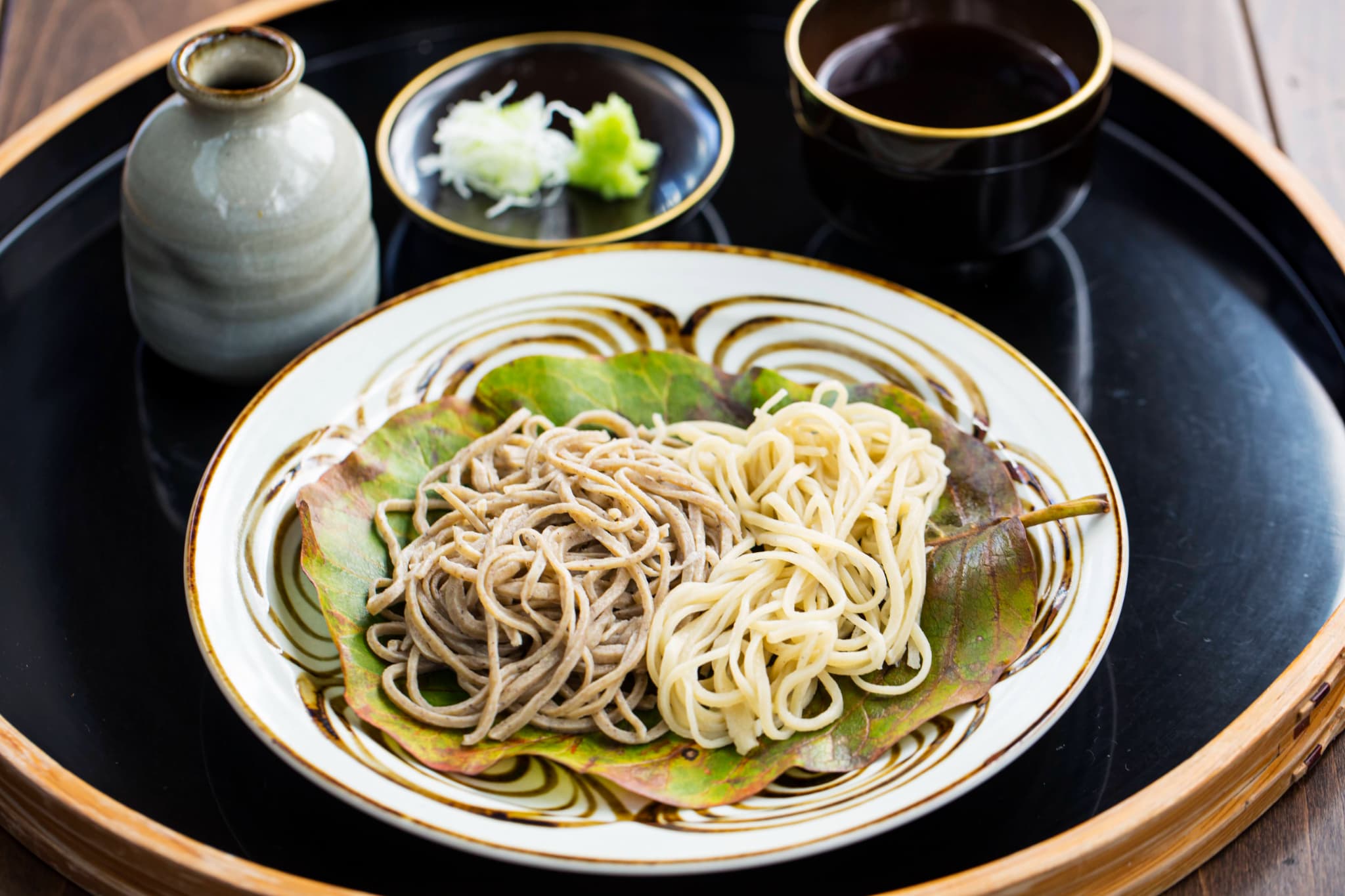
It is not only Japan where cooking with buckwheat flour has developed. For example, there are crepes and galettes made from buckwheat flour in France. Even in the colder regions of France where wheat is difficult to grow, buckwheat flour has been useful as a substitute. It is said that it was first eaten as buckwheat porridge and later as galettes. The same can be said of Japan in that it is an alternative to wheat and rice. This is the food culture that the wisdom of humanity has created and nurtured in order to survive. We can appreciate the climate of Nagano prefecture for birthing Shinshu soba, grown in coexistence with harsh natural environments.
